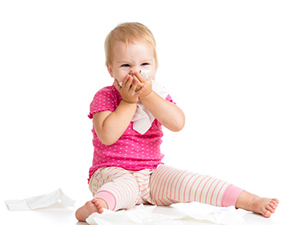The nose is subject to aggressions all year long, whether in winter due to the cold weather and cold, or in spring when pollen is back. In addition to the weather, we put every day our nose to the test by exposing it to dry air (air conditioning…), pollution, irritant substances (cars, smoking) or to treatments for colds, sinusitis or allergic rhinitis which may dry the nasal mucosa (vasoconstrictors, corticosteroids).
 First defense barrier: taking care of the nose is important.
First defense barrier: taking care of the nose is important.
A nasal spray which contains a sea water solution:
- Makes blowing easier thus removing pathogenic mucus
- Helps to prevent infections after a sinusitis-type cold
- Facilitates and improves clear breathing
When the nasal mucosa is weakened by repeated aggressions or chronic respiratory disorders (sinusitis, asthma, respiratory allergy…), the inside of the nose becomes irritated, dry and itchy and crusts may form. Breathing thus becomes painful and the nasal mucosa no longer plays the role of defense mechanism. It must therefore be rapidly moisturized to encourage healing.
ESSENTIAL FOR CHILDREN:
Rhinopharyngitis is the first most common infectious disease in children and the first cause of consultation at the paediatrician’s.
- Newborns are unable to blow their nose and breathe only through the nose until the age of 6 months. Cleaning your baby’s nose is therefore essential to its health.
- Children under 4 years have an immune system that is not fully developed, and they therefore catch colds more easily. At 2 years, a baby can have up to 10 colds per year! This trend fortunately decreases over time.
Sources:
Antibiotherapy by general route of administration in standard practice: acute rhinopharyngitis. AFSSAPS January 1999
http://www.mayoclinic.com/health/common-cold-in-babies/DS01106